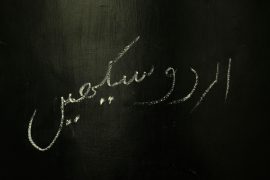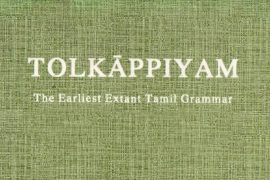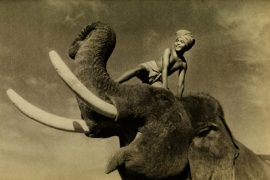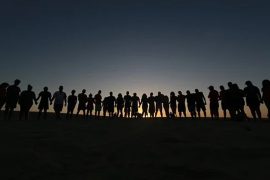‘I’m looking at this thing, and absolutely out of nowhere, I realised I was looking at a man-made earth object that was going to leave the earth and the solar system, never to return… something that will last longer than the pyramids, the ice ages and even the earth itself… and I realised, “Oh my God, this is the first thing we’ve created that ‘they could find.” It’s got to carry a message!’
This was the thought of the scientific reporter Richard Hoagland as he looked at Pioneer 10, the first spacecraft made to leave the solar system and cross into interstellar space. He dragged the astronomer Carl Sagan aside and told him that Pioneer 10 should carry a message for the aliens. “Oh, what a nice idea,” Sagan replied.
Sagan formulated a simple yet powerful message for extraterrestrial beings. The Pioneer Plaque, with a picture of a naked man and woman etched onto the gold-plated aluminium plates and placed in the spacecraft, lets the aliens know who created the spacecraft and gives the location of Earth in case they want to reach us. The Pioneer 10 was launched on 2 March 1972.
Five years later, Sagan would carry out a more ambitious project to leave a message for alien civilisations. Voyager 1 and Voyager 2 were designed to go beyond our solar system, just like their predecessors, Pioneer. The project manager, John Cassani, approached Sagan and asked him to create a message for the Voyagers to carry.
It was meant to simply be an extension of the Pioneer Plaque, but it became more complex when the idea of making an LP record was proposed. Rather than pictures, LP records would include an assortment of sounds along with low-resolution images of life on Earth. NASA approved the idea, and Sagan was given six weeks to complete the project.
Sagan assembled a team to produce this LP. He wanted the record to be a message from humanity, portraying the diversity of life on our planet with pictures and sounds from around the world and salutations in different languages.
Sagan’s wife, Linda Salzman-Sagan, an artist, collected salutations in 55 languages, including Arabic, Punjabi, Amoy, Zulu, and many more. The US President Jimmy Carter and the United Nations Secretary-General Kurt Waldheim gave two “official” greetings in English.
The journalist Ann Druyan added a very carefully curated representation of the life of the earth with sounds. “Sounds of Earth” is a collection of a variety of natural sounds, such as the crackle of fire, the sound of the wind, the howling of dogs, the patter of rain, the sound of thunder, the chirping of crickets, the croaking of frogs, and the many more. Some of the most beautiful human experiences are recorded through sounds, such as the sound of the kiss and the sound of the baby and the mother.
Artist Jon Lomberg and Wendy Gradison of Cornell University worked together to find images that could account for the earth. They went through books such as The History of Toys, Birds of North America, Plant-Devouring Insects, The Ages of Steam, and National Geographic magazines of almost two decades. There are 115 imagesencoded in an analogue form that “ give a full picture of earth and its inhabitants,” as Lomberg explained.
Photos of nature included trees, mountains, oceans, insects, animals, marine life, and more. Pictures of artificial structures portrayed human life and our achievements in science; people performing daily activities such as eating, a mother nursing her child, diagrams of DNA strands, human anatomy, and the solar system were amongst many that were sent.
The remaining record consists of a 90-minute selection of music from the East and West. Sagan wanted music that went beyond the rock and roll stations of the United States, but his knowledge was confined to Western classical music. Journalist Timothy Ferris took charge of this task and made a collection with “enough variety to hint at some of the diversity of earth’s people.”
The selection of music posed many challenges, and the question of what to include and what not to include always loomed over the team. Music by American hits such as The Beatles and Bob Dylan was considered but eventually dropped.
With the help of ethnomusicologists, Ferris collected what he called an imperfect collection. He said, “In addition to our own cultural biases and the time constraints of the Record, we had to contend with the sharp drop in information that imposes itself when one looks beyond one’s own culture.”
The record included twenty-seven tracks, including Australia’s Aborigine songs, Mexican classics, a Bulgarian shepherdess’s song, Navajo night chants, works of Bach, Mozart, Beethoven, Stravinsky, and many more, making up the “ethnic” selections.
Along with the selection of music from around the world is an Indian raga. The song is “Jaat Kahan Ho”, sung by Kesarbai Kerkar. Sung in a haunting tone, the lyrics and melody of Bhairavi raga render separation and isolation. The song’s lyrics also share the theme as they go, “Jaat Kahan ho Akeli, Gori”, posing a question to the girl about not going alone. However, there is something about the song that gives away that the girl is going on her way anyway, regardless of many requests to stop her.
The entire project came to be known as the Golden Record. It is a 12-inch gold-plated copper disc behind a larger gold disc. Voyager II was launched on 20 August 1977, and Voyager I on 5 September 1977. The copy of the Golden Record is on Voyager I, which became the first to leave the solar system and enter interstellar space.
Carrying the voice of Kesarbai Kerkar to new heights, the spacecraft is the farthest human-made object that has travelled in space. While aliens may or may not get to hear her voice, the Golden Record is a kind of time capsule, evidence of life on Earth.
“The spacecraft will be encountered, and the record played only if advanced space-faring civilisations exist in interstellar space. But launching this bottle into the cosmic ocean says something very hopeful about life on this planet.”
-30-
Copyright©Madras Courier, All Rights Reserved. You may share using our article tools. Please don't cut articles from madrascourier.com and redistribute by email, post to the web, mobile phone or social media.Please send in your feed back and comments to [email protected]











